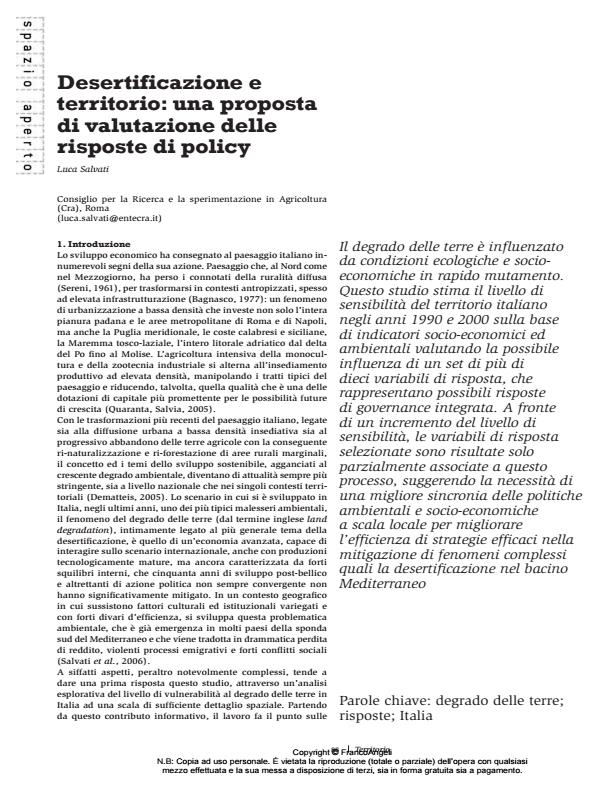Desertification and territory: a way to evaluate policy approaches
Journal title TERRITORIO
Author/s Luca Salvati
Publishing Year 2014 Issue 2014/68
Language Italian Pages 11 P. 88-98 File size 1951 KB
DOI 10.3280/TR2014-068016
DOI is like a bar code for intellectual property: to have more infomation
click here
Below, you can see the article first page
If you want to buy this article in PDF format, you can do it, following the instructions to buy download credits

FrancoAngeli is member of Publishers International Linking Association, Inc (PILA), a not-for-profit association which run the CrossRef service enabling links to and from online scholarly content.
Land degradation is influenced by rapidly changing environmental and socio-economic conditions. This study estimates the sensitivity of Italian territory in the 1990s and 2000s based on socio-economic and environmental indicators, evaluating the possible influence of a set of over ten variables representing possible integrated governance approaches. As the sensitivity increased, the selected approach variables turned out to be only partially associated with this process, suggesting the need for better integration between local environmental and socioeconomic policies to enhance the effectiveness of strategies to mitigate complex phenomena like the desertification of the Mediterranean basin.
Keywords: Land degradation; approaches; Italy
Luca Salvati, Desertificazione e territorio: una proposta di valutazione delle risposte di policy in "TERRITORIO" 68/2014, pp 88-98, DOI: 10.3280/TR2014-068016